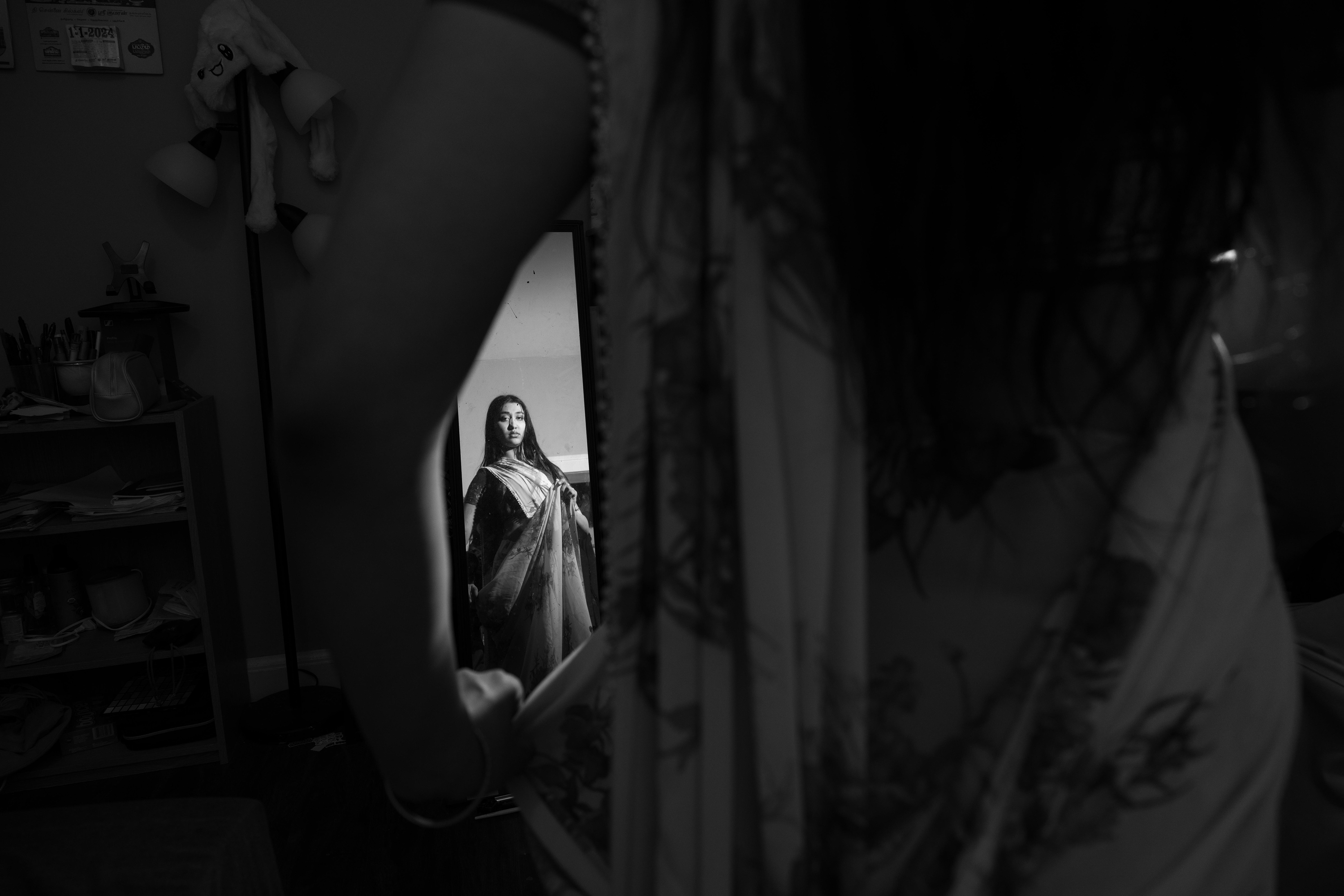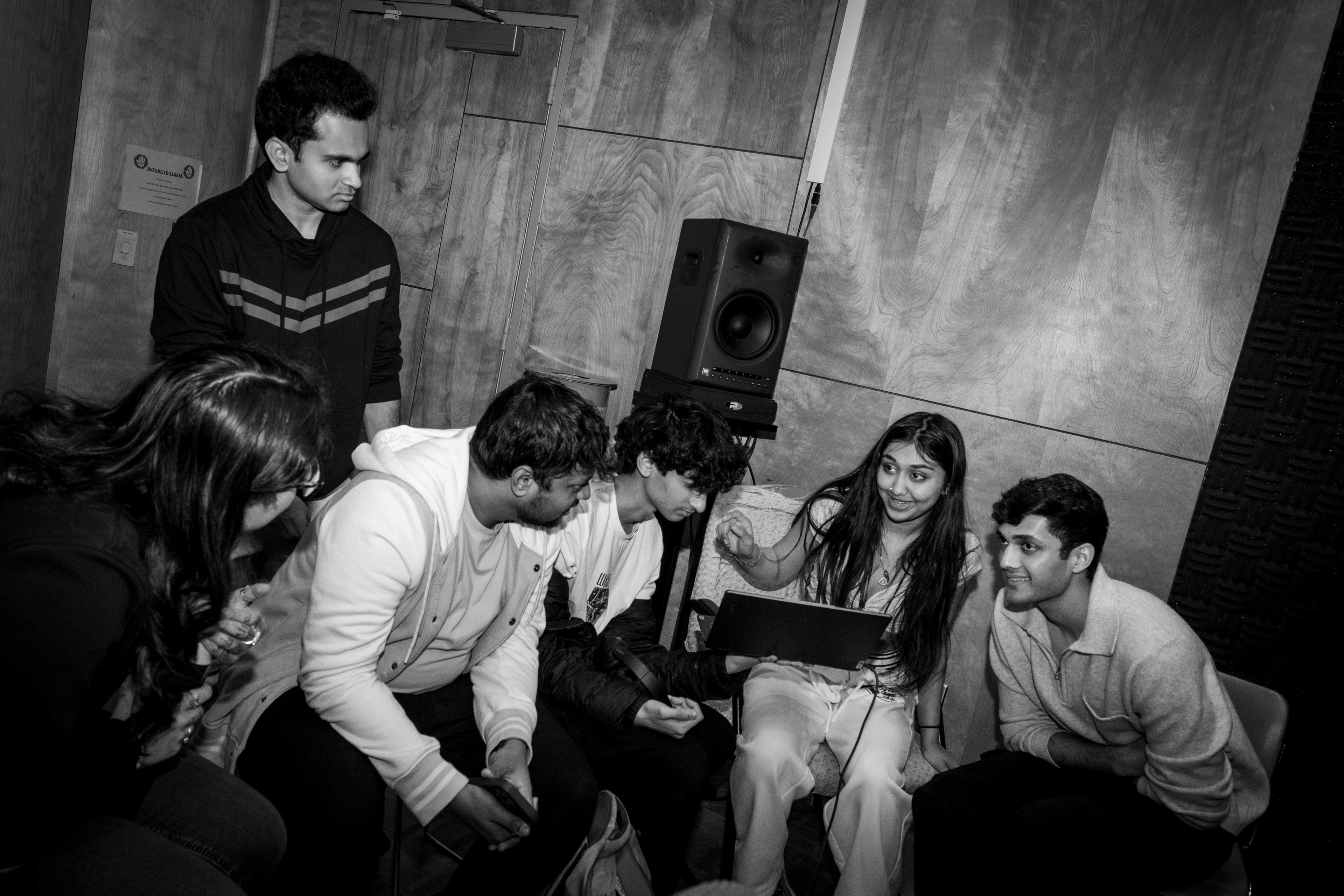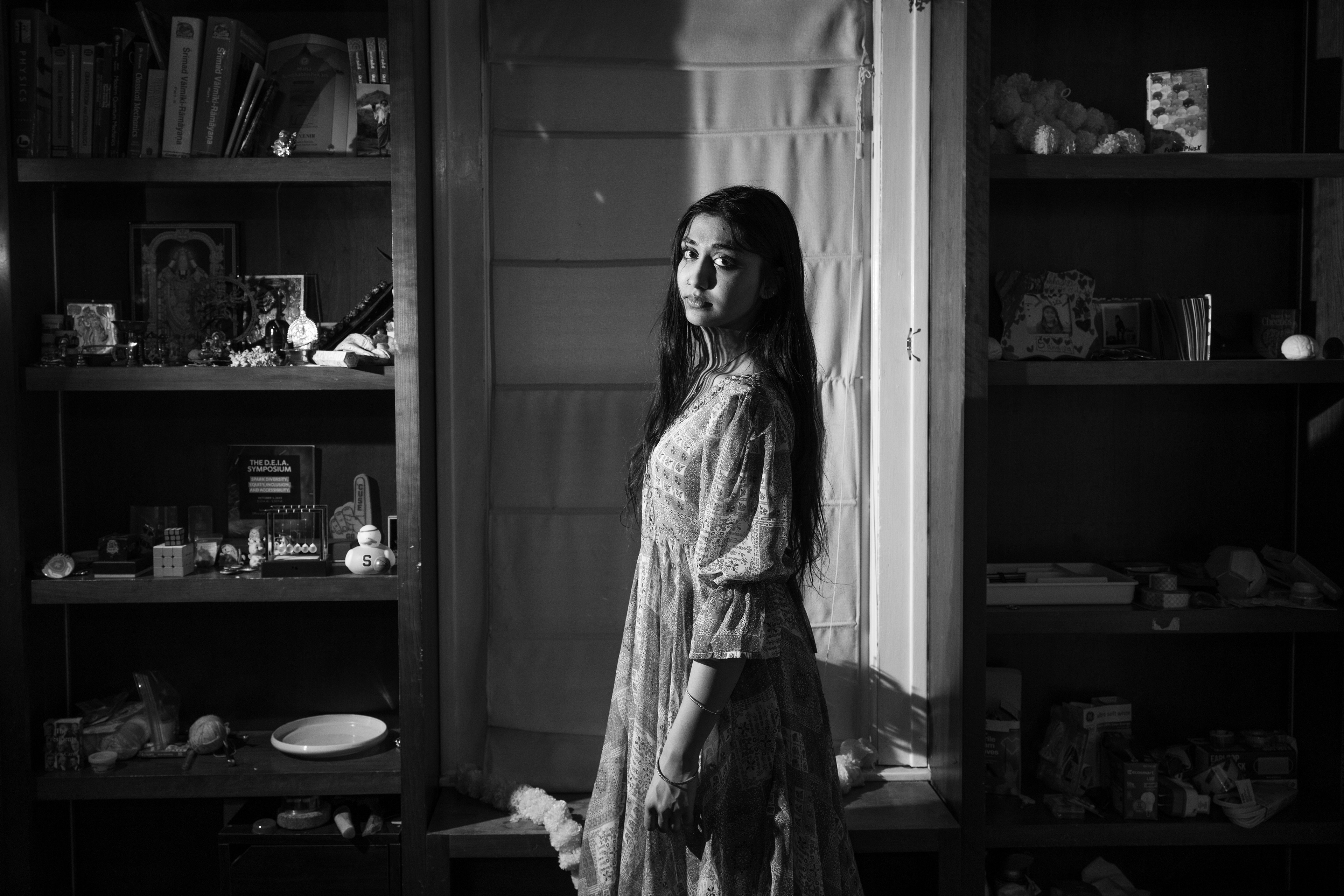Sahana Anand, a first-generation Indian American born and raised in Boston, began learning classical Indian dance and singing at just two years old. Though she was born in the United States, her connection to Indian culture has deepened through performance — where each movement, especially of the hands and body, carries specific emotions and meanings rooted in tradition.
Now a student at Syracuse University, Sahana continues to explore her cultural identity through arts. She founded Desi Performances, a campus organization that brings students together through a shared love of South Asian music and dance. She not only performs but choreographs all of the group’s dance pieces, thoughtfully crafting each performance to reflect both cultural tradition and contemporary expression. With a mission to amplify underrepresented voices and traditions, the group is helping shape a more inclusive arts community on campus.
Sahana’s devotion also extends into her spiritual life; her connection to her culture is both artistic and religious. During performances, she and her team often wear traditional Indian attire such as saris, adding another layer of cultural richness and pride to the experience. For Sahana, each performance is more than just art. It’s an ongoing journey to stay connected to her heritage and make space for others to do the same.

Sahana Anand practices a hand gesture symbolizing a bee pollinating a flower, a feminine motif in Indian classical dance, at her home in Syracuse. She usually does the gesture in front of a mirror to ensure each finger is precisely aligned.

Sahana wears a sari typically worn at home by young girls coming of age, but for performances, she elevates the look with jewelry and a more ornate blouse to make it feel special. The sari, a traditional Indian garment made from a long piece of cloth, is draped in various styles and reflects both cultural heritage and personal expression.

Sahana and members of Desi Performances gather at a music studio to record a Bollywood song, singing in their respective languages and blending different styles as they prepare for the International Festival at Syracuse University.

Sahan rehearses on the piano for the International Festival, where she performed the Pakistani song “Afreen Afreen” alongside Jaishva, who accompanied her on electric mandolin.

choreographs the piece herself and performs it at Hendricks Chapel, drawing from Hindu storytelling traditions to evoke a sense of melancholy by reflecting how the soul enters the world and endures dramatic experiences such as relationship abuse and financial hardship, and concluding with the message that a girl does not have to carry every burden alone.

Sahana distributes the costumes to Desi Performances’ members and carefully folds them before and after each performance. Folding a sari is an art, requiring attention to detail and precision.

Sahana records herself performing and practicing various arts, including singing, piano, and guitar, in this space. It serves as her personal studio for honing her craft.

Sahana and Jaishva jam together after rehearsal at Syracuse University, turning practice into a space for fun, connection and cultural expression.

Members of Desi Performances rehearse a flash mob dance on campus to the Telugu song “Chuttutamalle.” Sahana choreographed the routine, blending classical and cinematic Indian styles.

Sahana performs alongside Shreya during the International Festival at Schine Student Center. Their duet, “Rangrez,” blends classical Indian dance with contemporary expression, symbolizing a private language of love. As a gesture of gratitude and reverence, they toss flower petals to the audience, honoring both the divine and those who bear witness.

Sahana prays each morning to her family’s deity, Balaji. For her, it’s a way of speaking to God, a source of strength and positivity. In her faith, she believes God asks for nothing in return but love.

